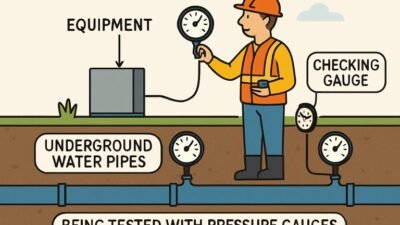Why Are Construction Sites So Dangerous?
Every year, construction sites see numerous accidents, from minor to fatal. The U.S. Bureau of Labor Statistics states that the construction industry is highly hazardous, with heavy machinery, high elevations, power tools, and unpredictable environments. Recognizing these dangers is vital for workers, site managers, contractors, and visitors. Safety protocols, training, and supervision are crucial to reduce risks and prevent accidents. Even minor lapses in attention or maintenance can have serious consequences.
With the frequency and severity of construction site accidents, understanding legal rights and options is just as important as physical safety measures. Workers who experience injuries should seek professional guidance from firms such as Injury Law Partners or other legal experts specializing in construction accident cases. Prompt and informed action, combined with workplace vigilance, can significantly affect outcomes for those affected by construction accidents.
Most Common Hazards on Construction Sites
Despite advances in safety protocols and technology, specific hazards appear frequently on construction sites. The Occupational Safety and Health Administration (OSHA) highlights the “Fatal Four” hazards as the most common causes of deaths and serious injuries:
- Falls:Falls are the leading cause of fatalities, often resulting from unstable scaffolding, ladders, or unguarded edges.
- Struck-By Incidents:Injuries occur when objects, tools, or machinery strike workers on site, sometimes due to poor visibility or unsecured equipment.
- Electrocutions:Exposure to live wires or defective machinery can cause shock, burns, and death.
- Caught-In/Between:Workers face risk when caught or crushed between heavy equipment, collapsing structures, or shifting materials.
Familiarity with these hazards is fundamental in making construction sites safer for everyone. Routine safety training and hazard identification must be central to every operation.
Tips to Prevent Falls
To prevent falls, install standard guardrails, toe boards, and safety nets on all surfaces, stabilize ladders, and train workers not to climb beyond safe heights. Regular inspections of fall arrest systems and ongoing training sessions are essential. Consistent workplace checks and promptly repairing hazardous areas can significantly reduce fall incidents.
Staying Clear of Struck-By Hazards
Staying alert around vehicles and machinery is critical. Workers should always wear hard hats and high-visibility vests, especially near forklifts, cranes, or trucks. Safe zones and marked walkways prevent foot traffic from hazardous areas. Never walk beneath elevated loads or overhead work. Secure tools and materials at heights to avoid falling objects.
Electrical Safety Musts
Electricity at construction sites poses significant risks, particularly when powering tools and cranes. Prior to beginning work, inspect all electrical equipment for issues—faulty wiring or exposed cables are indicators of potential danger. GFCIs are essential to prevent electrical shocks. It is prohibited to bypass safety switches or operate with live wires without proper training. Repairs should only be carried out by licensed electricians.
PPE: Your First Line of Defense
Personal protective equipment (PPE) forms the last barrier between workers and injury. Hard hats shield from falling objects, steel-toed boots prevent crush injuries, and gloves guard against cuts and chemical exposure. Employers are responsible for correctly fitting PPE, and employees must always wear it, no matter how simple or familiar the task.
Training and Communication Save Lives
A safety culture begins and ends with clear communication and regular training. Daily briefings, posted instructions, and open channels make reporting risks easy. Training should focus on site dangers, emergency plans, and near-misses. Sites with strong communication see fewer serious accidents.
Final Thoughts
Construction sites will always be risky, but these dangers can be minimized through proactive hazard awareness, steadfast use of PPE, and rigorous training programs. Workers, site managers, and contractors must stay informed about the latest best practices and safety regulations. A shared commitment to safety and vigilance on the job site protects lives and prevents injuries.



